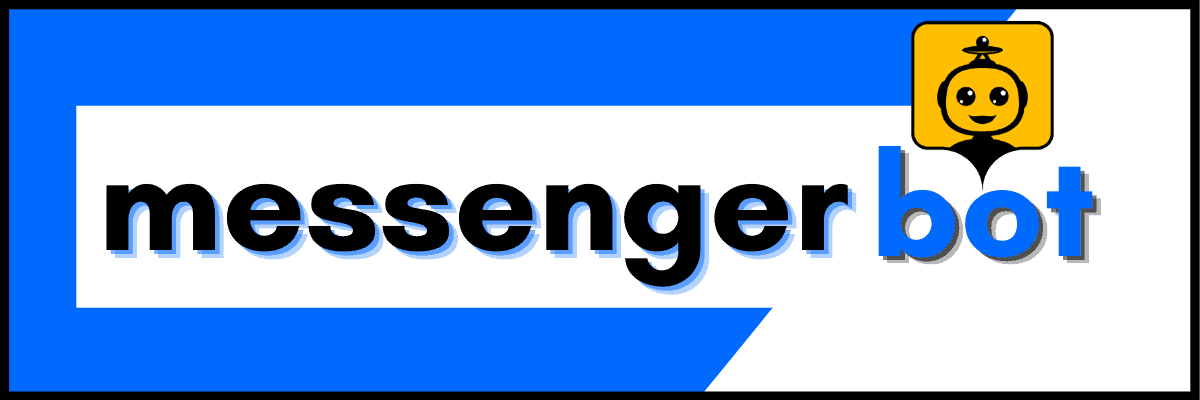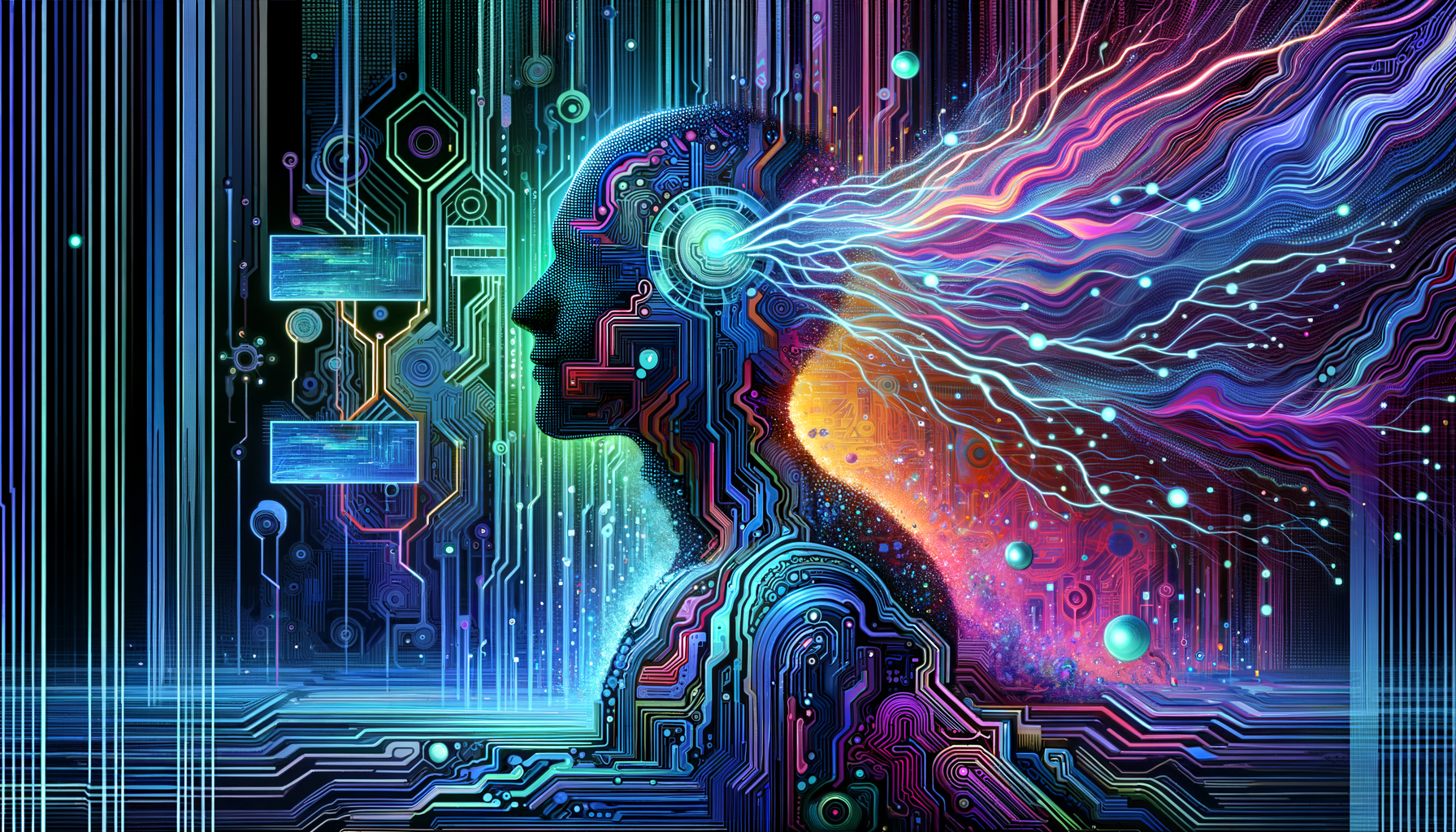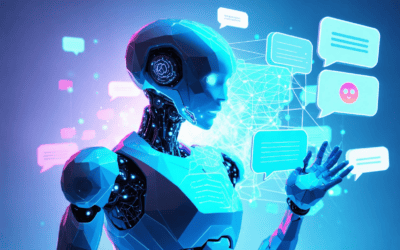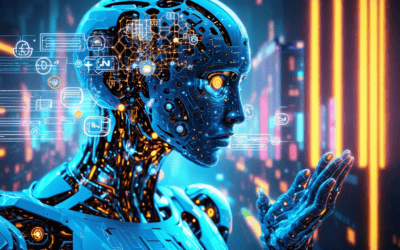In the rapidly evolving landscape of customer support, conversational AI is emerging as a game-changer, revolutionizing the way businesses interact with their customers. Unlike traditional chatbots, these advanced AI-powered systems are reshaping the customer experience by offering more natural, context-aware, and personalized interactions. As companies strive to meet the growing demands for instant, round-the-clock support, conversational AI platforms are becoming an indispensable tool in their arsenal. This article delves into the world of conversational AI, exploring its key components, advantages over basic chatbots, and real-world applications in customer service. We’ll examine top conversational AI platforms, discuss the future of voice-based AI, and provide insights on implementing these cutting-edge solutions in your business to enhance customer satisfaction and streamline support operations.
Understanding Conversational AI
Conversational AI is revolutionizing the way businesses interact with customers, offering intelligent, human-like communication through various digital channels. As a leader in this space, we at Messenger Bot are at the forefront of providing sophisticated AI-driven solutions that enhance customer engagement and streamline support processes.
What is a conversational AI?
Conversational AI refers to advanced technologies that enable computers to understand, process, and respond to human language in a natural and meaningful way. It’s the driving force behind intelligent chatbots and virtual assistants that can engage in human-like dialogue, understand context, and provide personalized responses.
Unlike traditional rule-based chatbots, conversational AI utilizes machine learning and natural language processing (NLP) to continuously improve its understanding and responses. This technology allows for more dynamic and context-aware interactions, making it an invaluable tool for businesses looking to enhance their customer service and engagement strategies.
Key components of conversational AI systems
To deliver effective and natural interactions, conversational AI systems rely on several crucial components:
- Natural Language Processing (NLP): This component enables the AI to understand and interpret human language, including nuances, context, and intent.
- Machine Learning: Allows the system to learn from interactions and improve its responses over time, adapting to new queries and scenarios.
- Dialog Management: Manages the flow of conversation, ensuring coherent and contextually appropriate responses.
- Natural Language Generation (NLG): Responsible for formulating human-like responses based on the processed information.
- Integration Capabilities: Enables the AI to connect with various platforms and data sources to provide comprehensive and accurate information.
At Messenger Bot, we’ve integrated these components into our platform, allowing businesses to create sophisticated AI chatbots that can handle complex queries across multiple channels. Our AI-powered customer service bots are designed to elevate your brand’s support experience, providing quick, accurate, and personalized assistance to your customers.
As the demand for efficient customer interaction grows, platforms like Brain Pod AI’s Multilingual AI Chat Assistant are also making significant strides in the field, offering versatile solutions for businesses looking to implement conversational AI. The integration of these advanced AI systems is becoming increasingly crucial for companies aiming to stay competitive in today’s digital landscape.

Conversational AI vs. Traditional Chatbots
As we delve deeper into the world of AI-powered communication, it’s crucial to understand the distinction between conversational AI and traditional chatbots. While both aim to enhance customer interactions, they differ significantly in their capabilities and approach.
What is the difference between chatbot and conversational AI?
The primary difference lies in the level of sophistication and intelligence. Traditional chatbots are rule-based systems that follow pre-programmed scripts to respond to user queries. They’re limited to a fixed set of responses and can only handle simple, predictable conversations.
Conversational AI, on the other hand, employs advanced natural language processing (NLP) and machine learning algorithms to understand and respond to user inputs more naturally. Our Messenger Bot utilizes this technology to provide more dynamic and context-aware interactions, adapting to various scenarios and learning from each conversation.
Advantages of conversational AI over basic chatbots
Conversational AI offers several key advantages over traditional chatbots:
- Natural Language Understanding: Unlike basic chatbots, conversational AI can interpret complex sentences, understand context, and even detect sentiment, allowing for more human-like interactions.
- Learning and Adaptation: Our AI-powered system continuously learns from interactions, improving its responses over time and adapting to new scenarios.
- Multi-turn Conversations: Conversational AI can maintain context throughout a conversation, enabling more coherent and meaningful exchanges.
- Personalization: By analyzing user data and past interactions, conversational AI can provide tailored responses and recommendations.
These advantages make conversational AI a powerful tool for businesses looking to enhance their customer support experience. While platforms like Dialogflow offer robust conversational AI capabilities, our Messenger Bot provides a user-friendly interface that makes it easy for businesses of all sizes to implement advanced AI-powered communication.
By leveraging conversational AI, businesses can provide more efficient, accurate, and personalized customer service, ultimately leading to improved customer satisfaction and loyalty. As we continue to innovate in this space, the gap between traditional chatbots and conversational AI will only widen, making it essential for forward-thinking companies to embrace this technology.
Top Conversational AI Platforms
As the demand for efficient customer support solutions grows, businesses are increasingly turning to conversational AI platforms to enhance their customer interactions. At Messenger Bot, we’ve seen firsthand how these advanced systems can revolutionize customer service. Let’s explore some of the leading platforms in the market and how they stack up.
Which is the best conversational AI?
Determining the “best” conversational AI platform depends on specific business needs, but several stand out for their robust features and performance:
- Messenger Bot: Our platform excels in providing a comprehensive suite of AI-powered tools for customer engagement across multiple channels, including social media and websites.
- IBM Watson Assistant: Known for its advanced natural language processing capabilities and integration with IBM’s broader AI ecosystem.
- Google Dialogflow: Offers powerful language understanding and seamless integration with Google Cloud services.
- Amazon Lex: Leverages the same technology behind Alexa, providing robust voice and text chatbot functionalities.
- Microsoft Copilot: Integrates AI-powered assistance across Microsoft 365 applications, enhancing productivity and customer interactions.
Each of these platforms offers unique strengths, but we’re proud to say that Messenger Bot provides a user-friendly interface and a wide range of features that cater specifically to businesses looking to enhance their customer support through AI.
Evaluating conversational AI platforms for customer support
When assessing conversational AI platforms for customer support, consider the following key factors:
- Natural Language Processing (NLP) capabilities: Look for platforms with advanced NLP to ensure accurate understanding of customer queries.
- Multilingual support: In our globalized world, the ability to communicate in multiple languages is crucial. Our multilingual messenger bots are designed to break language barriers effectively.
- Integration capabilities: The platform should easily integrate with your existing systems and channels.
- Customization options: Look for platforms that allow you to tailor the AI’s responses to match your brand voice.
- Analytics and reporting: Robust analytics tools help you measure performance and continually improve your AI’s effectiveness.
- Scalability: Ensure the platform can grow with your business needs.
- Security and compliance: Prioritize platforms that adhere to data protection regulations and have strong security measures in place.
At Messenger Bot, we’ve incorporated these crucial elements into our platform, ensuring that businesses can provide top-notch customer service automation solutions. Our AI-driven tools are designed to forge deeper connections with customers while maintaining efficiency and scalability.
Remember, the best conversational AI platform is one that aligns with your specific business goals and customer needs. We recommend taking advantage of free trials, like our free trial offer, to test different platforms and see which one performs best for your unique requirements.
IV. Conversational AI Examples in Customer Service
As a leader in conversational AI solutions, we’ve witnessed firsthand the transformative impact of AI-powered chatbots in customer service. These intelligent systems are revolutionizing how businesses interact with their customers, providing swift, accurate, and personalized support around the clock.
A. Real-world applications of conversational AI chatbots
Conversational AI chatbots are being deployed across various industries to enhance customer support experiences. For instance, in the banking sector, JPMorgan Chase has implemented an AI-powered assistant that helps customers with account inquiries, transaction history, and even financial advice. This AI chatbot can understand complex financial queries and provide tailored responses, significantly reducing the workload on human agents.
In the e-commerce realm, Amazon utilizes conversational AI to assist customers with order tracking, product recommendations, and returns processing. Their AI chat system can handle multiple languages, making it accessible to a global customer base. This multilingual capability is a key feature we’ve also integrated into our Messenger Bot platform, allowing businesses to connect with customers worldwide.
B. Success stories of AI-powered customer interactions
The success of conversational AI in customer service is evident through numerous case studies. For example, KLM Royal Dutch Airlines implemented an AI-powered chatbot that handles over 50% of their customer service inquiries. This chatbot assists with flight bookings, check-ins, and even provides personalized travel recommendations, resulting in a 40% reduction in call center volume and significantly improved customer satisfaction rates.
Another notable success story is Domino’s Pizza, which introduced an AI chatbot named “Dom” for order processing. Dom can take orders through various platforms, including Facebook Messenger and voice assistants. This implementation led to a 25% increase in online orders and improved order accuracy. Similarly, our Messenger Bot can boost online sales by providing seamless customer interactions and personalized product recommendations.
These examples demonstrate the power of conversational AI in transforming customer service operations. By leveraging advanced natural language processing and machine learning algorithms, businesses can provide faster, more efficient, and more personalized support experiences. As we continue to innovate in this space, the potential for AI-driven customer interactions will only grow, paving the way for even more sophisticated and effective customer service solutions.
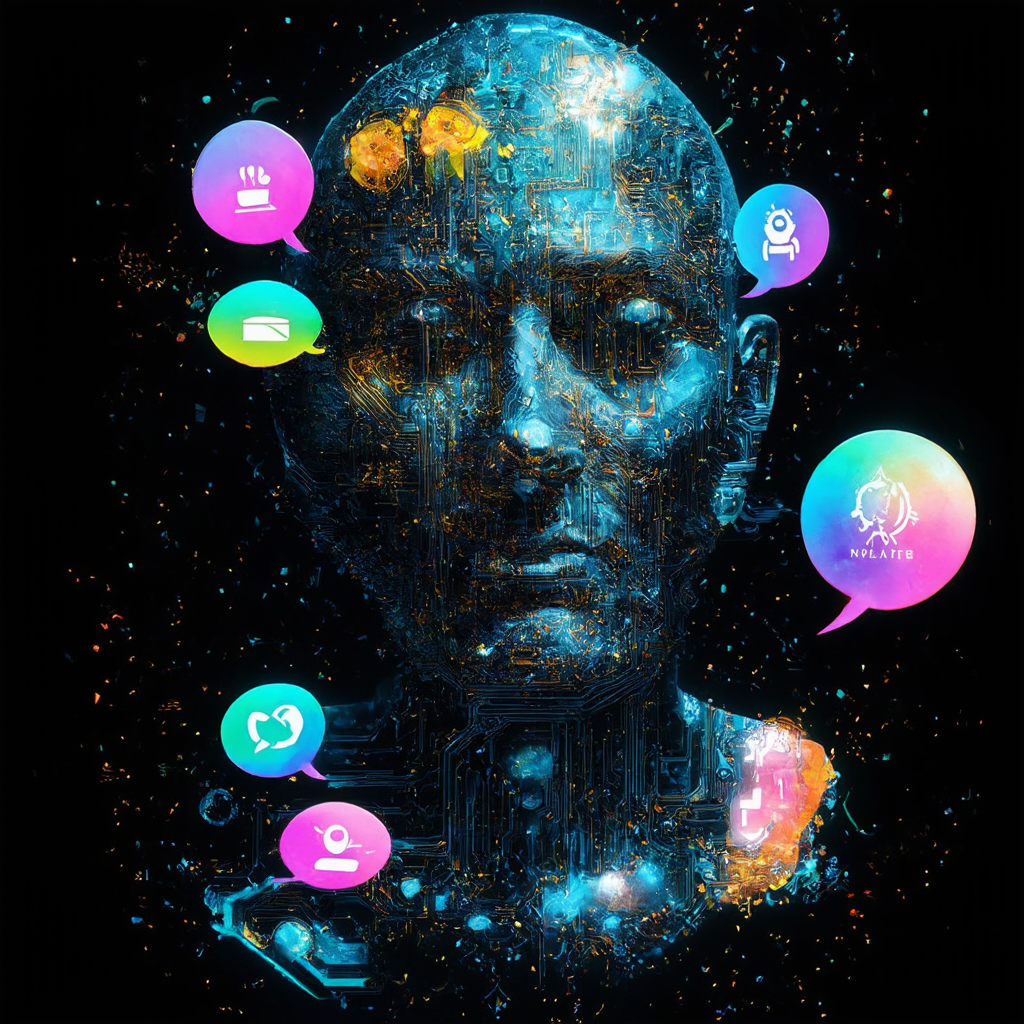
V. The Future of Voice-Based Conversational AI
As we look ahead, voice-based conversational AI is poised to revolutionize how we interact with technology and receive customer support. The integration of advanced voice recognition and natural language processing is opening up new possibilities for more intuitive and human-like interactions between users and AI systems.
A. Advancements in conversational AI voice technology
Recent breakthroughs in conversational AI voice technology are dramatically improving the capabilities of voice-based systems. These advancements include:
- Enhanced speech recognition accuracy: AI models can now understand diverse accents, dialects, and even background noise with remarkable precision.
- More natural-sounding synthesized voices: Text-to-speech engines are producing voices that are increasingly indistinguishable from human speech.
- Improved context understanding: AI systems are becoming better at grasping the nuances of human conversation, including tone, intent, and emotional cues.
- Multilingual support: Voice AI bots can now seamlessly switch between languages, making them ideal for global customer support.
These technological leaps are enabling more sophisticated and engaging voice interactions, paving the way for wider adoption of voice-based conversational AI across various industries.
B. Integrating voice AI bots in customer support systems
The integration of voice AI bots into customer support systems is transforming the way businesses interact with their customers. Here’s how companies are leveraging this technology:
- 24/7 availability: Voice AI bots provide round-the-clock support, handling customer queries at any time without the need for human intervention.
- Scalability: These systems can handle multiple conversations simultaneously, significantly reducing wait times and improving overall efficiency.
- Personalization: By analyzing customer data and past interactions, voice AI bots can offer tailored recommendations and solutions.
- Seamless handoffs: Advanced systems can smoothly transfer complex issues to human agents, ensuring a continuous and frustration-free customer experience.
At Messenger Bot, we’re at the forefront of this revolution, offering cutting-edge AI-powered customer service bots that can be easily integrated into existing support systems. Our platform enables businesses to harness the power of voice-based conversational AI, providing an enhanced customer experience that’s both efficient and personalized.
As voice AI technology continues to evolve, we can expect even more innovative applications in customer support. From proactive issue resolution to emotion-aware responses, the future of voice-based conversational AI promises to bring unprecedented levels of efficiency and customer satisfaction to support interactions.
VI. Implementing Conversational AI in Your Business
Implementing conversational AI in your business can revolutionize customer interactions and streamline operations. As a leader in AI-driven communication solutions, we at Messenger Bot understand the importance of choosing the right tools and following best practices for successful integration.
A. Choosing the right conversational AI tools and platforms
Selecting the appropriate conversational AI platform is crucial for your business success. Consider factors such as scalability, integration capabilities, and specific features that align with your business needs. Look for platforms that offer robust natural language processing (NLP) capabilities and machine learning algorithms to ensure accurate and context-aware responses.
When evaluating options, consider industry leaders like Dialogflow for its versatility, or IBM Watson for enterprise-level solutions. However, for businesses seeking a user-friendly yet powerful option, our Messenger Bot platform offers a comprehensive suite of features designed to enhance customer engagement across multiple channels.
Key features to look for in a conversational AI platform include:
1. Multi-channel support (e.g., website, social media, SMS)
2. Easy-to-use interface for bot creation and management
3. Analytics and reporting capabilities
4. Integration with existing CRM and customer support systems
5. Customization options to match your brand voice
B. Best practices for conversational design and AI integration
To ensure successful implementation of conversational AI, follow these best practices:
1. Define clear objectives: Establish specific goals for your AI chatbot, such as improving response times or increasing customer satisfaction.
2. Map out user journeys: Identify common customer queries and create conversation flows that address these effectively.
3. Personalize interactions: Utilize customer data to tailor responses and recommendations, enhancing the overall user experience.
4. Implement a hybrid approach: Combine AI capabilities with human support for complex queries or sensitive issues.
5. Continuously train and optimize: Regularly analyze chatbot performance and user feedback to refine responses and improve accuracy.
6. Ensure seamless handoffs: When transitioning from AI to human agents, ensure a smooth transfer of context and information.
7. Maintain brand consistency: Align your chatbot’s tone and language with your brand voice to create a cohesive customer experience.
8. Prioritize data security: Implement robust security measures to protect customer information and comply with data protection regulations.
9. Offer multilingual support: If your business serves a global audience, consider implementing multilingual chatbots to break down language barriers and enhance customer satisfaction.
10. Monitor and measure success: Utilize analytics tools to track key performance indicators (KPIs) and assess the impact of your conversational AI implementation.
By following these guidelines and leveraging the right tools, you can successfully integrate conversational AI into your business, enhancing customer experiences and driving operational efficiency. Our Messenger Bot tutorials provide additional resources to help you get started on your AI implementation journey.
VII. Conversational AI vs. Generative AI
As we continue to explore the realm of artificial intelligence, it’s crucial to understand the distinctions between different AI technologies. Conversational AI and generative AI are two prominent branches that often intersect but serve distinct purposes in the world of customer support and beyond.
A. Understanding the distinction: Conversational AI vs generative AI
Conversational AI and generative AI are both powerful technologies, but they have different focuses and applications. Conversational AI is specifically designed to engage in human-like dialogues, understand context, and provide relevant responses in real-time. It’s the technology behind AI chatbots and virtual assistants that can interpret user intent and maintain coherent conversations across multiple turns.
On the other hand, generative AI is a broader category of artificial intelligence that can create new content, such as text, images, or even code, based on patterns learned from existing data. While it can be used in conversational contexts, its primary function is to generate novel outputs rather than engage in back-and-forth dialogues.
The key differences include:
1. Purpose: Conversational AI aims to simulate human-like interactions, while generative AI focuses on creating new content.
2. Interaction: Conversational AI is designed for ongoing dialogues, whereas generative AI typically produces standalone outputs.
3. Context understanding: Conversational AI excels at maintaining context over multiple exchanges, while generative AI may not necessarily retain context between generations.
4. Application: Conversational AI is primarily used in customer support, virtual assistants, and chatbots, while generative AI has a wider range of applications, including content creation, design, and problem-solving.
B. Combining conversational and generative AI for enhanced support
While conversational AI and generative AI have distinct strengths, combining these technologies can lead to more powerful and versatile AI systems, especially in the realm of customer support. Here’s how the integration of these AI technologies can enhance customer interactions:
1. Dynamic response generation: By incorporating generative AI capabilities, conversational AI chatbots can create more nuanced and contextually appropriate responses, going beyond pre-programmed scripts.
2. Personalized content creation: Generative AI can help produce tailored content on-the-fly, allowing conversational AI to offer more personalized recommendations, product descriptions, or solutions to customer queries.
3. Improved problem-solving: The combination can enable AI systems to not only understand customer issues but also generate creative solutions or workarounds that might not be in their existing knowledge base.
4. Enhanced natural language understanding: Generative models can help conversational AI better interpret complex or ambiguous user inputs, leading to more accurate and helpful responses.
5. Multilingual support: By leveraging generative AI’s language capabilities, conversational AI can more effectively provide support in multiple languages, expanding its global reach.
At Messenger Bot, we’re continuously exploring ways to integrate these advanced AI technologies to provide superior customer support solutions. By harnessing the power of both conversational and generative AI, we aim to create more intelligent, responsive, and versatile chatbots that can handle a wide range of customer interactions with unprecedented efficiency and personalization.
As the field of AI continues to evolve, the synergy between conversational and generative AI promises to revolutionize customer support, making interactions more natural, efficient, and satisfying for both businesses and their customers. The future of AI-powered customer service lies in this powerful combination, offering endless possibilities for enhancing customer experiences across various industries.
